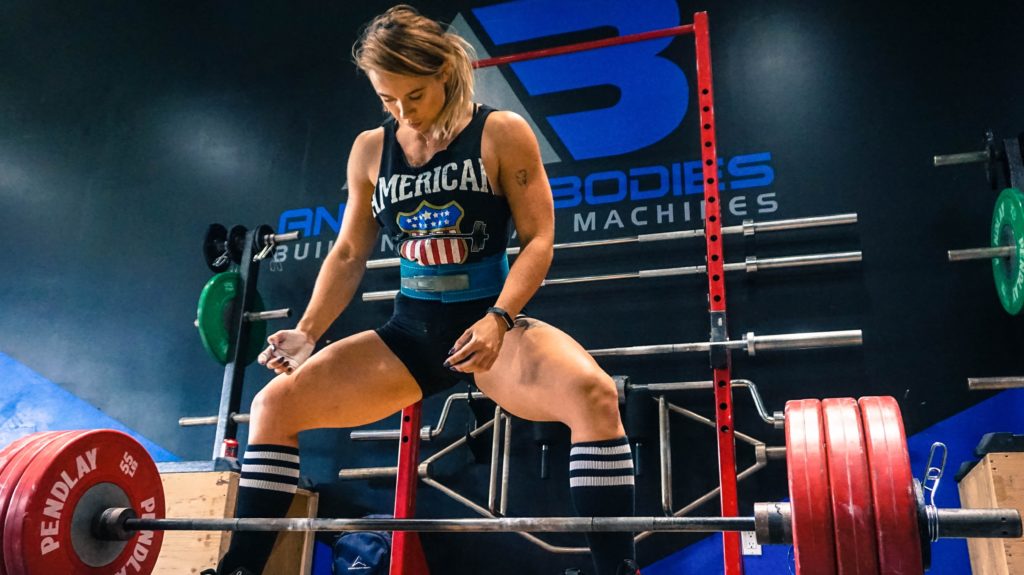
It’s not unusual for people to assume that when we talk about intensity in the fitness world that they think we talk about the kind of intensity you can see on fitness “motivational” videos.
What we’re going to talk about here is real scientific way of looking at intensity and why we have to measure our workout intensity in two ways to get the best results possible out of our training.
The First Type Of Intensity – Absolute Intensity
There are two types of intensity in the strength training context.
The first type of intensity is measured with actual weight on the bar which is also called absolute intensity. This also needs to be put into context depending on how strong the individual is and what he is doing (lifting weights).
This is because for somebody 45kg/100lbs can be really heavy weight, and for somebody 45kg may not even be a warm up.
How intense in absolute sense the weight is, depends on how much the individual can lift for one repetition.
How we know if the weight is heavy for somebody is by knowing their 1RM (1RM = one repetition max).
So if somebody can lift 70kg/154lbs on the bench press for 1RM, then 45kg/100lbs will be his 67% of 1RM (67% of his one repetition max).
That way we know that for somebody who can lift a maximum of 70kg on the bench press for one rep, 45kg is 67%.
This “65% of 1RM” is the number with which we measure “actual” intensity or objective intensity. The intensity is objective because it is actual weight on the bar.
Actual intensity is measured by percentage of 1RM. This can be tested on any exercise, although some lifts are not practical to do 1RM tests like isolation exercises.
We usually test 1RM on the big lifts like squat, bench, deadlift or overhead press because bigger compound lifts like these.
There are more reasons why you don’t want to test 1RM on the isolation exercises like bicep curl, shoulder lateral raises etc. but the main reason is safety.
It’s not really smart to put so much pressure on a single joint in a very concentrated way. It also doesn’t do anything productive, it’s just dangerous.
It is also dangerous for novices to do 1RM on big compound lifts because they require a lot of skill to test the 1RM properly.
That’s why calculators for 1RM exist.
You can roughly know what your 1RM is based on how many repetition you did with a certain weight.
So for example, if you did 12 reps with 45kg/100lbs on the bench press, Brzycki Equation says that you will be able to lift 64.8kg/142lbs for one repetition max.
So when we say that the intensity must go up through time, what we actually mean is that you need to get stronger through time.
When your goal is to build muscle you don’t want to get stronger because you want to lift more weight, but lifting more weight for the same amount of reps and sets will indicate that muscle growth has occurred.
You can train in a way in which you lift more weight but that doesn’t necessarily mean that the muscle growth has occurred
The Second Type Of Intensity – Relative Intensity
Intensity is often confused with relative intensity and for a good reason. Although the word is almost the same it has a different meaning.
Taking the example that we used before, how do we know that 12x45kg/100lbs on the bench press is the maximum that we can do?
Well the most obvious answer is that we got stuck under the bar on the bench press and our training partner helped us lift it from our chest.
What happens when we can’t lift a certain amount of weight anymore is called concentric failure.
This happens because we reached the point at which the muscle couldn’t produce enough force to lift the weight for another rep.
We DON’T want to reach a concentric failure on any given set.
This is why we want to know how far from failure we are in the set. We want to literally know how many reps we have left “in the tank” before we reach failure.
You don’t have to worry if you feel that you can’t judge how far from failure you really are at this point because that can ONLY be learned through PRACTICE.
How can you know how far from the failure you are if you have never reached concentric muscle failure? You can’t really.
Experienced coaches can help you judge how far are you from failure but you never really know until you try to push yourself. This can only be done with a help of experienced spotters.
What happens when you don’t have experienced spotters? Well, go and watch gym fails on youtube and you will understand.
We have two ways of actually measuring the proximity from failure.
The first methods is called RPE = Rate of Percieved Exertion.
RPE scale was developed and popularized for weight training by Mike Tuscherer. He is a powerlifter and also a world class powerlifting coach with multiple IPF champions under his name.
“RPE is a rating of performance” – Mike Tuscherer
RPE is a scale that goes from 1-10.
10 being the maximum exertion (meaning that you don’t have any reps in the tank) and 1 being a lowest exertion (meaning not even a warmup weight).
In weight training, everything bellow RPE6 is considered a warmup because from current scientific understanding we know that anything bellow RPE6 is not enough stimulus to induce any meaningful adaptation whether it be hypertrophy or strength. (and I would bet money on that)
How to Use RPE Scale?
Let’s say that you can do 12x45kg/100lbs on the bench and we’re going to say that that was your RPE10. This means that you don’t have anything left in the tank. You can’t do another rep even if you wanted to.
Your RPE8 for 45kg/100lbs on the bench press would by definition be 10 reps.
Basically how you measure RPE is by rating how many reps you have left in the tank, which looks like this:
- 10 = you can’t do another rep
- 9.5 = you can maybe do another rep
- 9 = you can definitively do one more rep
- 8.5 = you can maybe do 2 reps, but you can for sure do one more
- 8 = you can definitively do 2 more reps
- 7.5 = you can for sure do 2 reps, maybe even 3
- 7 = you can definitively do 3 more reps
- 6.5 = you can for sure do 3 reps maybe even 4 (inherently not precise)
- 6 = you can definitively do 4 more reps (inherently not precise)
- <6 = warmup (almost impossible to precisely judge)
When you’re not sure if you can do 2 more reps but you’re definitively sure you can do 1 more rep, that’s when you add the .5 after the number.
What you have to know is that the goal with RPE is not to be neurotic and to try to measure everything perfectly.
This is one of those things that you can only get better with practice.
RIR – Reps In Reserve
The second method of measuring relative intensity is just to count how many reps have you left in the tank which is called RIR = reps in reserve.
This method is much simpler and it literally is what is says… how many reps could you do before you reach failure.
So if you did 10 reps with 45kg/100lbs but you could do 2 more reps… you guessed it! That’s 2RIR!
Simple right!
Either of those two are just fine (RPE or RIR), but you have to remember that you MUST use one of those because relative intensity is a non optional variable which you must log into your lifting journal.
The goal of both relative and objective intensity is to judge how hard we are training.
Training intensity is closely correlated with training volume and training frequency.
They affect one another in a fundamental way.
How much volume we do depends on how intensely we train. How often we train will affect how much volume we do and how intensely we train. How intensely we train will depend on how much volume we need to do etc.
Summary
Absolute Intensity
We measure absolute (objective) intensity by how much weight are we lifting relative to our 1RM.
This is measured with percentage of our rep max.
If we can lift 100kg/220lbs for one repetition then 80kg/176lbs is 80% of our one repetition max (1RM).
80% of 1RM is the “actual” or objective intensity.
Relative Intensity
We have two methods of measuring relative intensity which are RPE and RIR. Both do the same thing but from different perspective.
RPE is a scale from 1-10 which measures our effort. 1 being the least and 10 being the most effort.
The way we measure RPE is by counting how many reps we have left before we reached failure on a given set and then subtracting that number of reps from 10.
RPE 8 is 2 reps from failure.
RIR is literally a number of reps you can do before you reach failure.
If you can do 2 more reps before you reach failure that means that you count that as a 2RIR.
The purpose of all of these measurements is to properly track and adjust our training based on this intensity data and other data that we also need to track so that we can further adjust our training as needed.
The ultimate goal of all these measurements is to get as close as possible to a training routine that is most optimal for us as an individual.
“Optimal training program” doesn’t really exist but it is our goal to continuously chase after it piece by piece if we want to reach as close to our potential as lifters.

